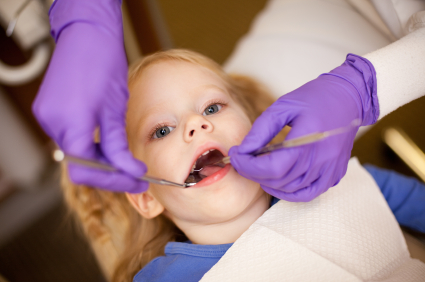 As a dentist and mother of young children, I get lots of questions from parents about how to take care of baby teeth. This tells me that parents are increasingly aware that oral health is an important part of their child’s overall health.
As a dentist and mother of young children, I get lots of questions from parents about how to take care of baby teeth. This tells me that parents are increasingly aware that oral health is an important part of their child’s overall health.
In the past, baby teeth were often ignored because they fall out and are replaced by more permanent teeth. But baby teeth need to be protected. They are important to a young child who is just learning to eat and speak, and they help guide adult teeth into place. Plus, tooth decay can be painful and interfere with a child’s ability to concentrate and do well in school.
Parents are sometimes surprised when I share this good news: Kids don’t have to get cavities. Tooth decay is almost entirely preventable. Starting early with good oral hygiene and regular preventive care can help ensure that your child enjoys a lifetime of good oral health. Plus, preventing tooth decay helps avoid the expense of treating decay. It makes sense to prevent cavities rather than paying to fix them.
One of the most important tips for good oral health is simple: Children should have an oral health screening by their first birthday by a dentist or a physician.
The prevailing wisdom used to be that kids don’t need their first screening until age 3. However, recent studies show that this is not soon enough. Teething usually starts around 6 months of age, and dental decay can begin soon after teeth emerge. So early screenings, by age 1, are an important tool to prevent dental disease.
Having physicians pay attention to oral health makes sense because parents take their children to physicians for well-child checkups as many as 11 times before age 3. A physician can check teeth for signs of early decay, provide information to parents about protecting oral health and refer the child to a dentist when follow-up care is needed.
Here are some oral health tips that I share with parents:
- Beginning at birth, wipe your baby’s gums with a washcloth or piece of gauze after feeding.
- As soon as you see baby’s first tooth, start brushing it with a soft “baby” toothbrush. Use a small amount (rice-sized) of fluoridated toothpaste.
- Try putting your child’s head in your lap to make brushing easier.
- Limit how often your child has juice, sweet drinks or snacks. Constant snacking on sugary, sticky or starchy foods or sipping sweet liquids can cause tooth decay.
- Ask your child’s dentist or physician about fluoride varnish, which is painted on the teeth to prevent or heal early decay.
- If you put your baby to bed with a bottle, fill it with water. Formula, milk, or juice can increase your child’s risk of cavities.
- Around age 4 or 5, your child will be ready to practice brushing their own teeth. Children still need your help brushing until they are 8 years old or until they can tie their shoes.
We all want our babies to be healthy, and that’s why I encourage parents to pay attention to their child’s baby teeth. Good oral health is an important part of overall health, which is one reason Medicaid covers dental care for children. Please help spread the word that children’s dental disease is preventable and taking care of baby teeth is the best way to get started. Your children, and your pocketbook, will reap the rewards.
To learn more about how to care for your baby’s teeth, go to Kids Oral Health.
Eve Rutherford is a dentist practicing in Snohomish, a board member of Washington Dental Service Foundation and a mother of two young boys.









